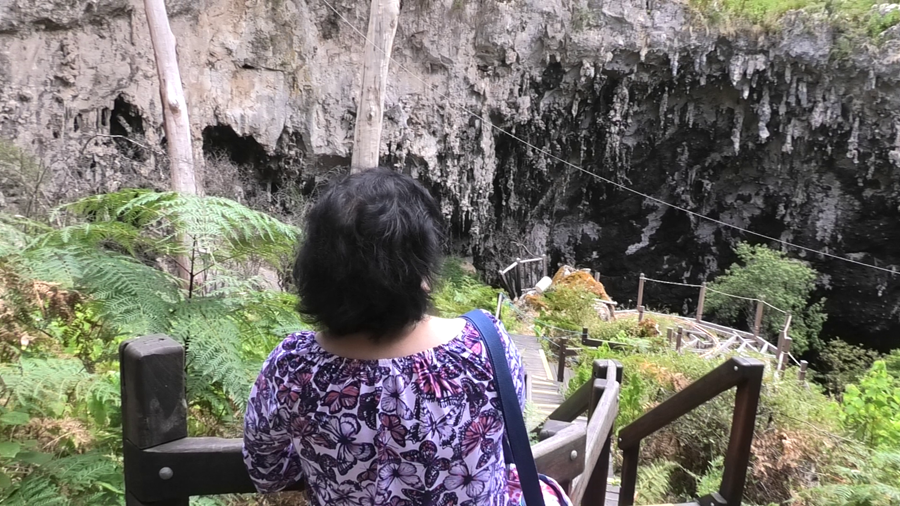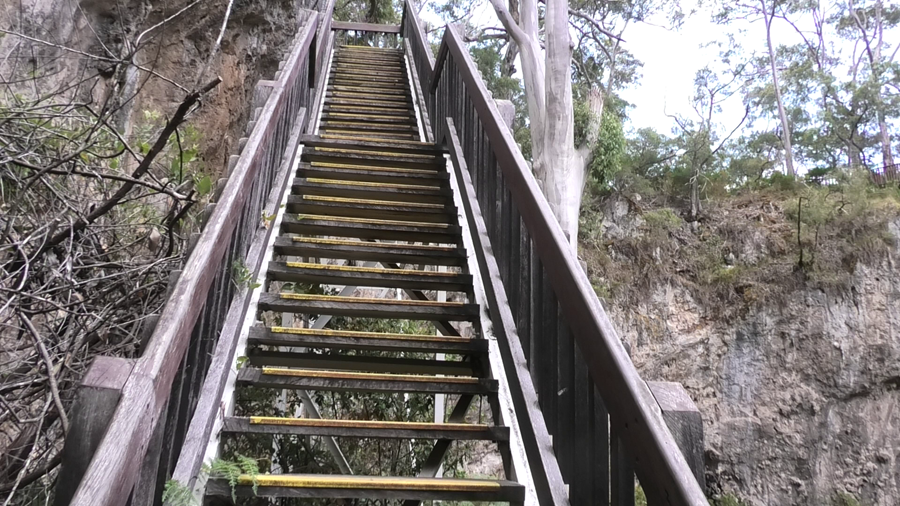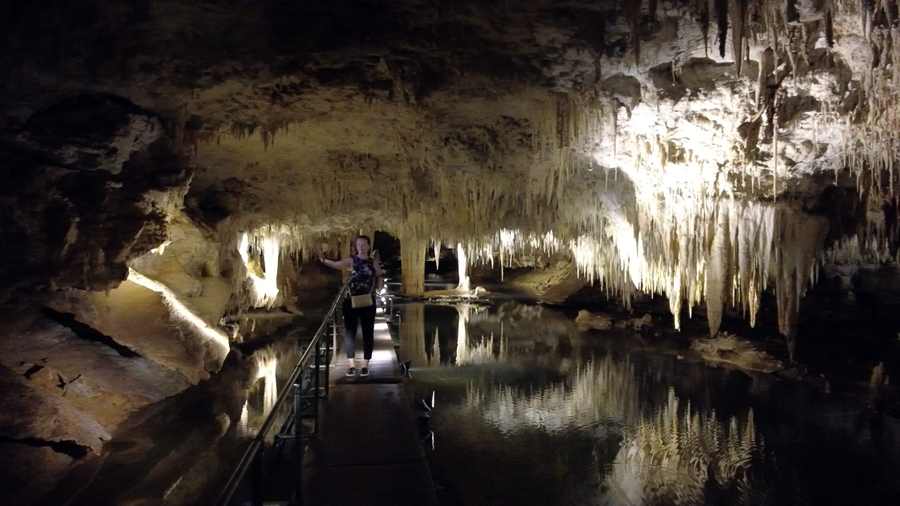|
The Margaret River area is well known for its many limestone caves. Several are open to the public including Lake Cave that is situated near Conto Campsite just off Caves Road south west of Margaret River town.
A huge sink hole formed when the roof of part of this cave collapsed and this has become the entrance to a deeper section of the cave.
The lake in the cave had been gradually diminishing over time and this was ascribed to a lowering of the water table in the area but in 2021 a huge bushfire roared through the area removing much of the vegetation.
This resulted in more water making its way in to the cave since the vegetation was no longer taking so much of it up and by 2023 the lake was at higher levels than it had been for many years.
The fire also destroyed some of the wooden stairway leading down to Lake Cave. The cave was closed for some time afterwards while the stairs were re-built.
The first European known to have seen the cave entrance was Francis Bussell in 1867.
She had been out riding in the bush looking for stray cattle and told her family about it when she returned home. As she could not remember the exact location, the cave remained undisturbed for a further 30 years when it was rediscovered by her brother John Bussell and his friend Tim Connelly.
They used ropes to descend into the sinkhole and found that there was a deeper section leading down into what today is called Lake Cave.
It was realised that the cave had potential for tourism and in 1901 it was opened to the public for the first time.
Initially it was named Queen of the Earth but was later renamed to something more befitting the lake that lies within it.
It is the deepest of all the tourist caves in the Margaret River area at 62 metres.
The cave has been known to flood in the past and it is certainly one place I would not consider venturing during periods of very high rainfall.
Floods were recorded in 1924 and 1941 with the flood in 1924 taking 8 months to clear.
The speleotherms (cave decorations) include straws, stalactites, stalagmites, columns, shawls, helictites and flowstone.
They are made from calcite, a crystalline form of calcium carbonate. As rainwater penetrates the limestone, some of the rock is dissolved, creating a solution of calcium carbonate. When this solution enters the cave it is redeposited in crystalline form; as calcite.
Straws are long and thin and have hollow centres.
Stalactites hang from the cave roof and stalagmites rise up from the cave floor.
If you have trouble remembering which hang down and which grow up, remember the phrase:
'Stalactites hang tight to the ceiling and stalagmites might reach the ceiling.'
Columns are formed when a stalactite and stalagmite join together.
Shawls and flowstone are pretty much self explanatory but Helictites defy gravity and grow in many different directions.
There are some very rare cave dwelling creatures that call Lake cave home. Some are not dependant on the lake and these are known scientifically as troglofauna. The creatures that depend on the lake are called stygofauna.
In 2000 there were at least 23 different species of stygofauna in the cave but due to dropping water levels this had decreased to just 6 species by 2006.
Lake Cave is thought to be about 1 million years old. Apparently this is not particularly old for a cave. It is also a fast moving cave in terms of the growth of formations. Usually something like a stalactite increases by 1 inch every hundred years. Some of the formations in Lake Cave have been measured growing at 4 inches over a similar time frame.
Even the name, Lake cave is not technically correct. The water in the cave is actually a slow moving stream that runs down on an incline towards the sea.
Perhaps Stream Cave just doesn't have the same ring to it as Lake Cave.
Getting down into Lake Cave you will drop down three hundred and fifty steps on the various stair cases. You will certainly know more about them on your way back up.
If you are not physically up to the walk down into the cave and back, there is a walk through replica of part of the cave at the rear of the visitor centre and a large photograph of the lake in the cave to give you some idea of what the real thing would be like.
Check out our other VIDEOS
NEW **** CLICKABLE VIDEO MAPS **** NEW
Best time to visit:
|
Jan
|
Feb
|
Mar
|
Apr
|
May
|
Jun
|
Jul
|
Aug
|
Sep
|
Oct
|
Nov
|
Dec
|
|










